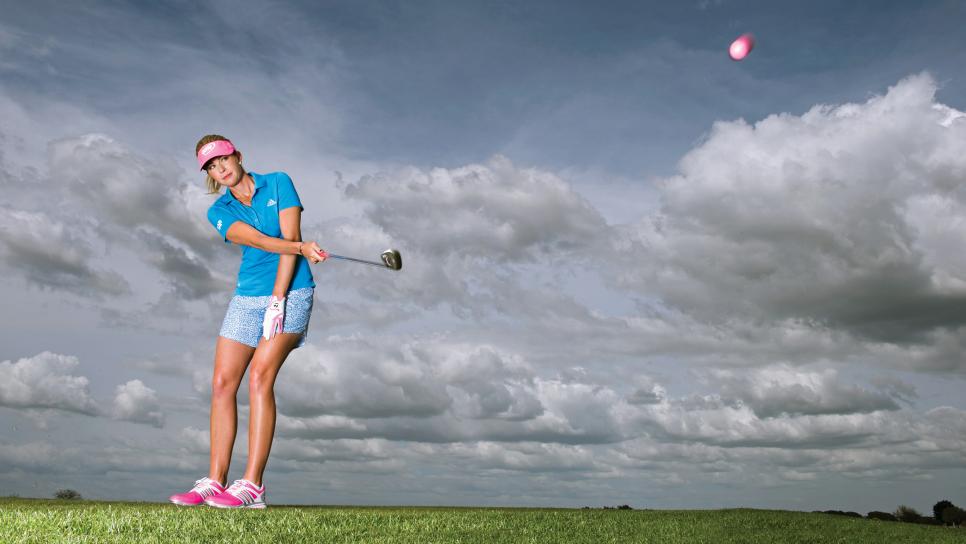"When I watch amateurs hit chips, pitches and bunker shots or listen to them talk about how they approach these parts of the game, I'm always troubled by how complicated they make it. With that in mind, I got together with my coach, David Whelan, and we came up with a handful of swing thoughts--one for each type of greenside shot--that will hopefully erase all that clutter from your mind and get you back to scoring. The way I see it, if you have confidence hitting these shots, you really don't need your best driving or iron game to make a lot of pars. So let's put the simple back into your play around the green." with Ron Kaspriske
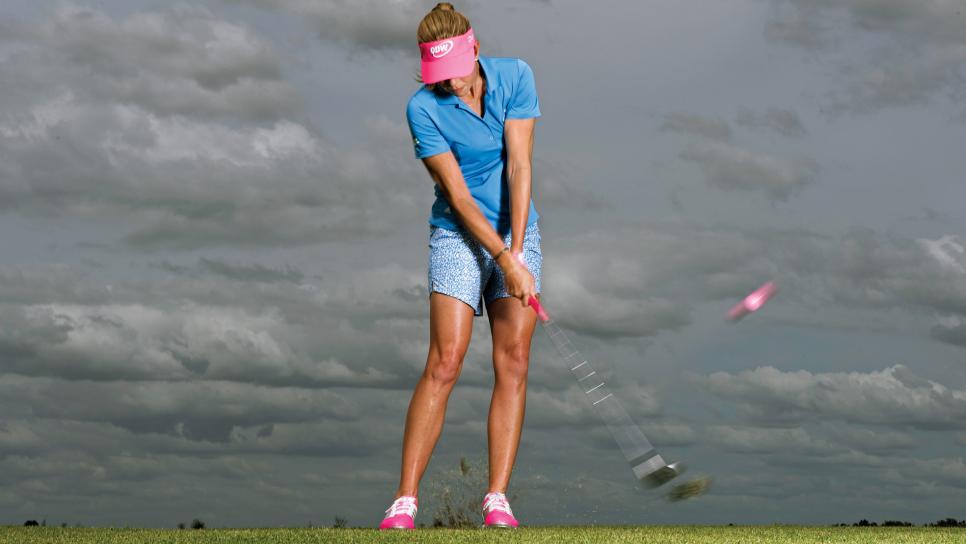
FULL WEDGE
I don't like making a big swing with my wedges. You can't control what the ball does very well. Sometimes it leaps off the clubface and flies over the green, and other times it balloons and falls way short.
Instead, I like to take a little more club than I need and swing at what feels like 75-percent effort (above). I play the ball just back of center in my stance, which lowers the flight. Then I try to stay smooth and let my torso rotation guide the club through the ball. My legs stay quiet. If you were watching me, you'd say I made an easy swing. That's a good thought over the ball.
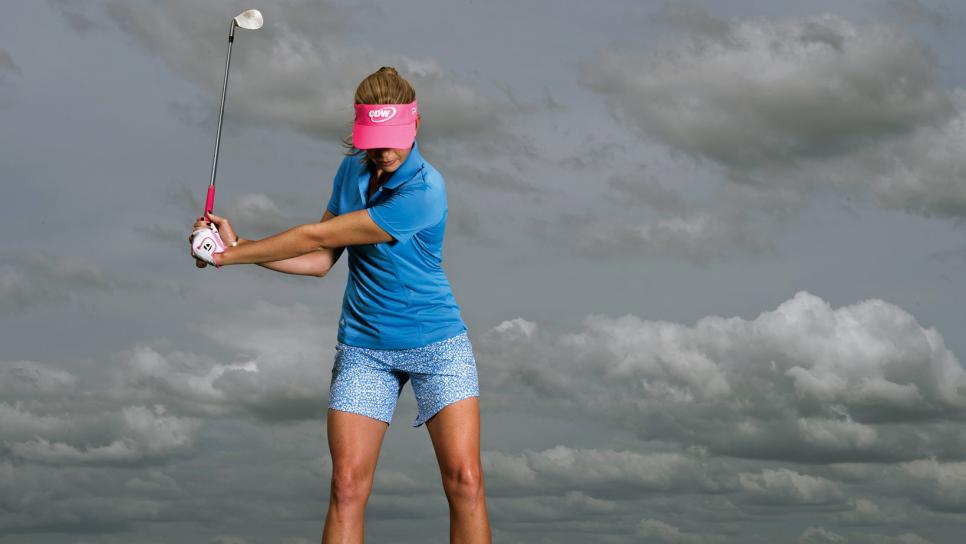
HALF-WEDGE
Rather than trying to hit a wedge softer to get the ball to fly a specific less-than-full-swing distance, it's simpler to have a couple of basic swings on tap and vary the distance by changing clubs.
Think L to L for a half-wedge shot. That means take the club back and hinge your wrists to the point where your left arm is parallel to the ground and the shaft is pointing skyward. The club and arm form the letter L (above). Then swing through, rehinge your wrists and finish with your right arm parallel to the ground and the club again pointing to the sky. This creates a reverse letter L (below). Stick with this thought, and keep track of how far the ball goes with each short iron in your bag. Using this basic half swing, you'll cover another range of distances.
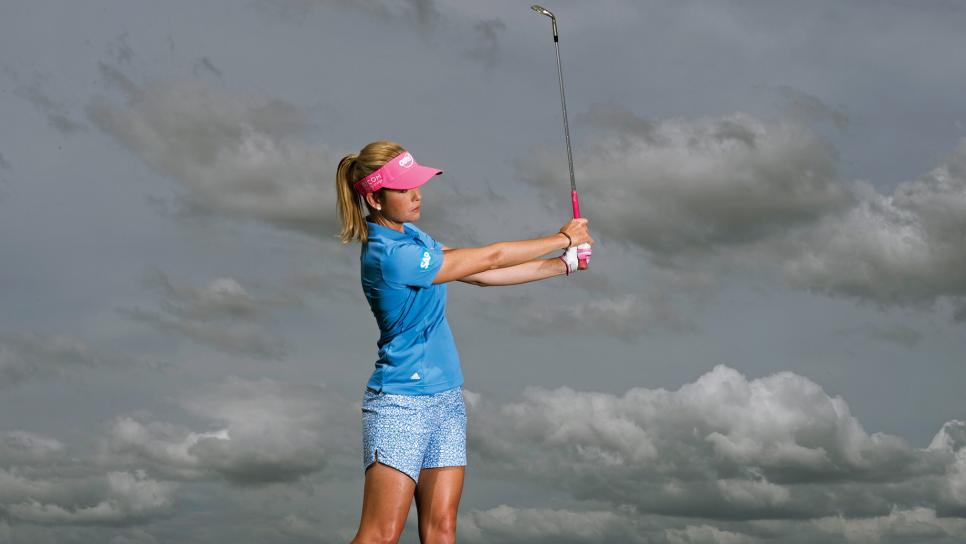
CHIP SHOT
My coach has a killer short game, and he's always giving me drills to make my chipping more consistent. One of the keys for crisp contact is to make sure the club bottoms out in the same spot every time, just after it hits the ball. To make sure that happens, the lower body should stay relatively still. If your legs are too active--your knees straightening or swaying--the swing bottom can shift, and that hurts your chances of hitting a good shot. I always want to feel grounded over my chips.

One drill I use to brace my lower body is to put my left hand on my left thigh (above). Then I hit chips with my right hand only. This works great for me. On the course, think about keeping your feet planted and legs still when you chip.
BUMP-AND-RUN
If your ball is just off the green and there's no high grass or obstacles between you and the hole, putting is a good choice. However, you might find it difficult to hit the putt hard enough to get it all the way there. In that case, try hitting a bump-and-run shot, which you execute much like you do a putt.

Grab your 7- or 8-iron, address the ball a little back of center in your stance, and think about hitting it like a long putt. It's a pendulum-like swing. The shoulders control the action, and the hands just go along for the ride (below). You don't need a lot of effort to get the ball to scoot through the fringe and roll to the hole. Think of it as a small, smooth swing.
Now it's time to go to work on that short game--and watch your scores start coming down.
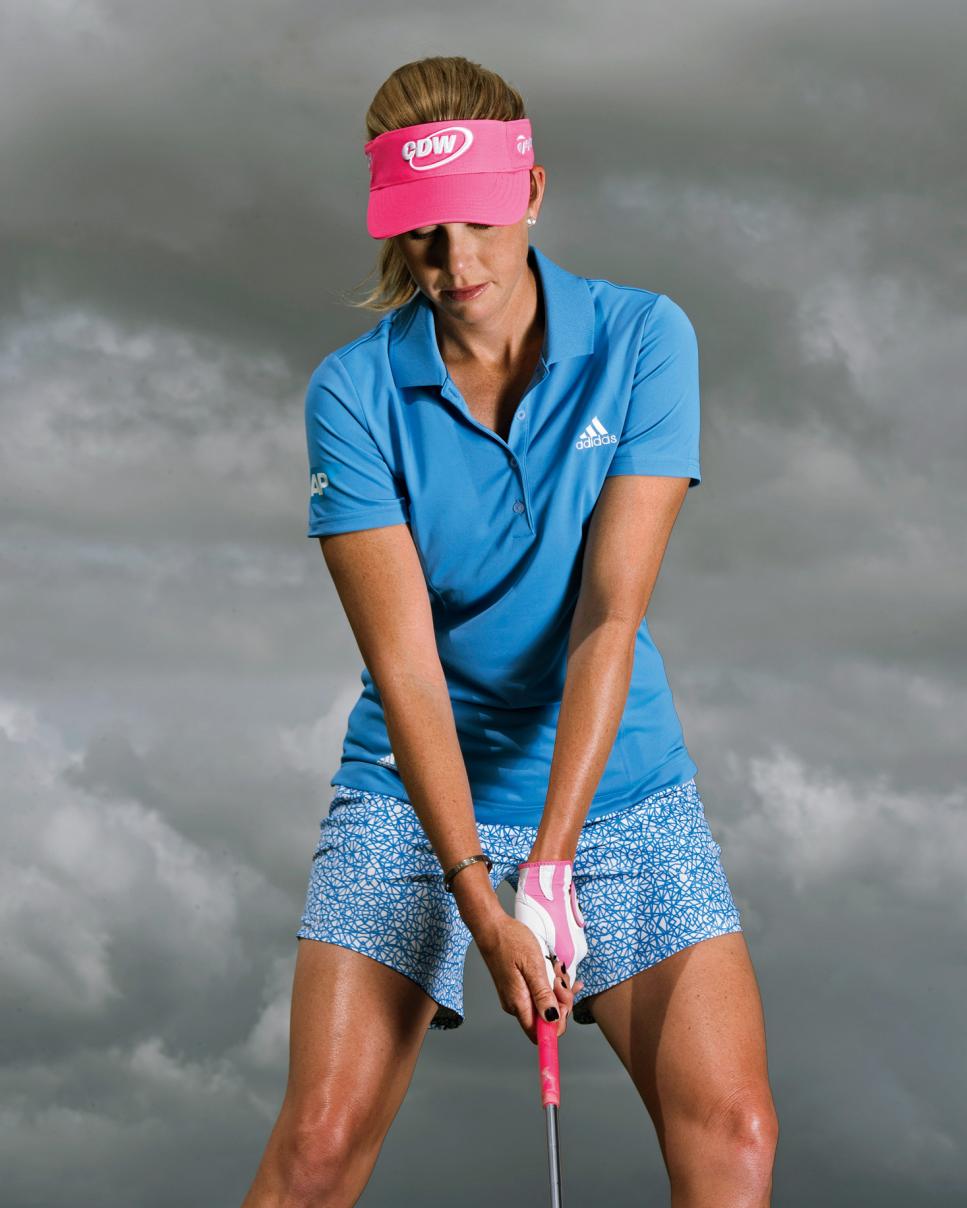
BUNKER SHOT
Many greenside sand shots are destined to fail before the club starts back. The problem for a lot of golfers is how they set up. If your weight is evenly distributed or favoring your back foot and the shaft of the club is leaning forward, you're going to struggle to hit a good bunker shot. The club will likely dig too deep and not have enough power to get the ball out.
The goal is to make contact with the sand behind the ball, then skim the club underneath it. The way you set up will help you do that. Play a sand shot with your lower body shifted toward the target, but your hands and upper body leaning away from it (above). Think, Weight forward, hands back.


